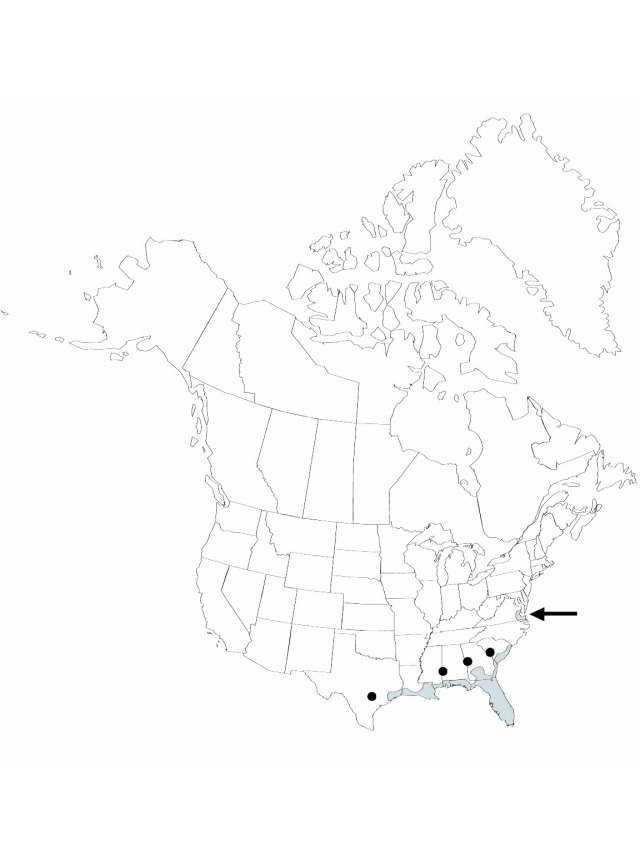Herbs, perennial, to 2 m; rhizomes coarse; stolons absent; corms absent. Leaves emersed; petiole terete, 44–58 cm; blade linear to ovate or elliptic, 20.3–35 × 0.7–16 cm. Inflorescences racemes or panicles, of 6–13 whorls, emersed, 16–72 × 19–60 cm; peduncles 75–125.5 cm; bracts connate more than or equal to ¼ total length, lanceolate to ovate-lanceolate, 3–32 mm, coarse, papillose or not; fruiting pedicels spreading, cylindric, 0.6–3.8 cm. Flowers to 3.3 cm diam.; sepals recurved to spreading, not enclosing flower or fruiting head; filaments cylindric, longer than anthers, pubescent; pistillate pedicellate, without ring of sterile stamens. Fruiting heads 0.5–1.2 cm diam.; achenes oblanceoloid, abaxially keeled, 1.6–2.5 × 0.8–1.1 mm, beaked; faces not tuberculate, wings absent, glands 1; beak lateral, erect, 0.3–0.7 mm.
Distribution

North America, Mexico, West Indies, Central America, South America.
Discussion
Subspecies 2 (2 in the flora).
Selected References
None.
Key
| 1 | Bracts and sepals striate to ribbed; leaves linear to ovate | Sagittaria lancifolia subsp. lancifolia |
| 1 | Bracts and sepals papillose; leaves lanceolate to broadly ovate | Sagittaria lancifolia subsp. media |